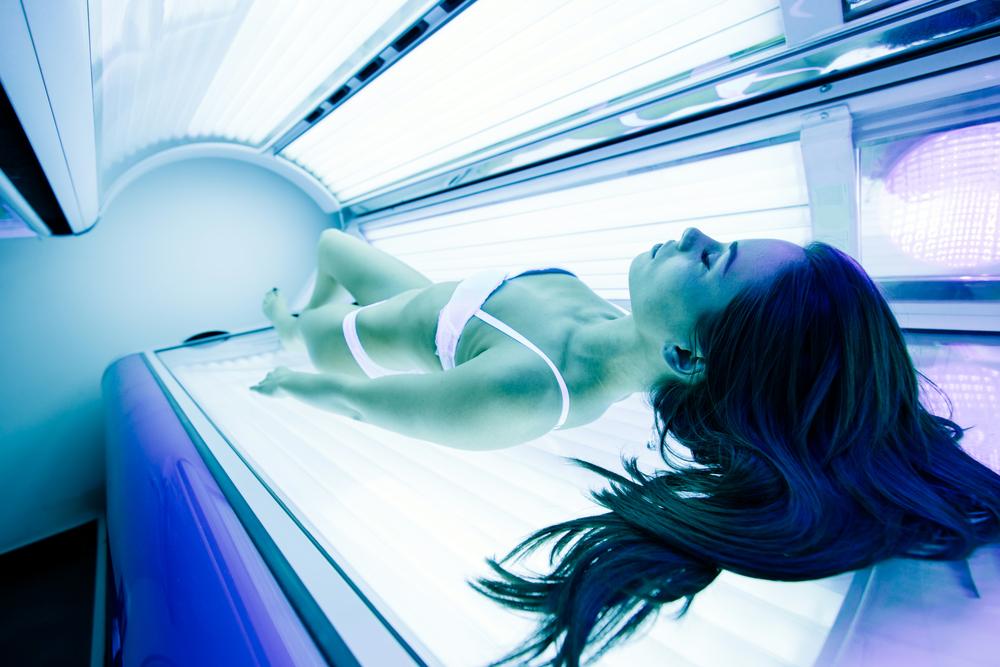
Tanning Beds Linked to Skin Cancer, Skin Aging, Immune Suppression and More
Is a getting a good tan really worth risking your health? For the millions of young people who use tanning beds every year—as many as 10 percent of teens and 43 percent of college students, according to one 2014 U.S.-based study—apparently it is.
Then again, maybe the people who use tanning beds aren't fully aware of the negative health consequences these devices can impose on salon-goers (and given the misleading claims from tanning bed manufacturers, this wouldn't be surprising). Perhaps the 30+ million Americans who use tanning beds every year mistakenly believe they're safer than the sun.
Unfortunately, this belief simply isn't true. Time to shine some light on tanning bed myths.
The Health Risks of Tanning Beds: What the Research Says
It'd take a long time to discuss all the research and studies done on the effects and safety of tanning beds. But even a brief summary is enough to highlight just how damaging these devices can be for a person's short-term and long-term well-being:
- In 2012, the Centers for Disease Control and Prevention (CDC) reported that use of a tanning bed before age 35 increases a person's risk of melanoma, a type of skin cancer, by a whopping 75 percent. In their same report, the CDC also advised that the World Health Organization recognizes tanning beds and other devices that use ultraviolet (UV) radiation as "a cause of cancer in humans."
- Exposure to UV radiation from the sun or a tanning bed not only increases a person's risk for skin cancers, but can also accelerate skin aging. And unlike what many people believe, many tanning beds actually emit more (up to three times more) UV radiation than sunlight, according to sources including Harvard Medical School.
- Just how damaging is UV radiation? The American Academy of Dermatology (AAD) warns that exposure to UV radiation from indoor tanning devices increases a person's risk of multiple types of skin cancer, including melanoma, squamous cell carcinoma, and basal cell carcinoma, as well as moles that may later progress into skin cancer. The AAD also cites research showing that indoor tanning may be responsible for as many as 400,000 cases of skin cancer per year in the United States alone.
- Cancer isn't the only negative consequence of indoor tanning, either. The AAD also cites studies showing a link between the use of tanning beds and health problems such as premature skin aging (including wrinkles and fine lines), immune suppression, cataracts, eye sunburn (photokeratitis), and cancer of the eye (ocular melanoma).
It's also important to realize that tanning beds don't only pose "future" health problems. According to two systematic reviews and meta-analyses published in 2012 volumes of BMJ (Wernher et al and Boniol et al), just one session in a tanning bed can increase a person's risk of basal cell carcinoma, melanoma, and squamous cell carcinoma, by 19, 20, and 67 percent, respectively.
And the results of a 2014 investigation revealed that as many as 3,234 injuries directly related to sun bed use were reported in the United States every year between 2003 and 2012. Acute injuries included burns, eye injuries, and passing out due to overheating and other reasons.
Conclusion
Tanning beds, sun beds, or any other indoor tanning device simply aren't all they're cracked up to be. They increase the risk of skin cancer (hence their dubious and ominous nickname "cancer tubes"), especially among young people who just so happen to be the demographic who uses them most. Tanning beds can also accelerate the rate of skin aging, damage the eyes, and lead to short-term injuries including burns.
As for the idea that you should hit a tanning bed before a vacation to build up your "base tan," try not to fall for that myth, either. Tanning (even without sunburn) is correlated with DNA damage in your skin—hence the increased cancer risk. Plus, any tan you can get in a tanning bed offers at best a minimal amount of "protection" against a future sunburn—the equivalent of SPF 4 sunscreen.
So if you're looking to avoid a sunburn on your next holiday, skip the tanning salon and practice safe sun habits instead, including some environmentally-friendly sunscreen and maybe a cute wide-brimmed hat.
https://www.fda.gov/radiation-emitting-products/tanning/risks-tanning
https://www.ncconsumer.org/news-articles/sellers-of-mercola-brand-tanning-beds-will-pay-in-refunds-for-false-advertising.html
https://www.ucsusa.org/resources/indoor-tanning-association-used-misleading-ad-campaigns-distort-skin-cancer-science
https://www.cancer.org/latest-news/the-ugly-truth-about-indoor-tanning.html
https://www.health.harvard.edu/staying-healthy/is-a-tanning-bed-safer-than-sunlight
https://www.aad.org/diseases/skin-cancer/surprising-facts-about-indoor-tanning
https://www.usatoday.com/story/news/nation/2014/01/29/indoor-tanning-increase/5028431/





.png?v=14052428765372906161761701960) Previous Post
Previous Post
%20copy.png?v=62173825240595680121761701960)